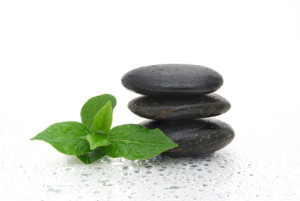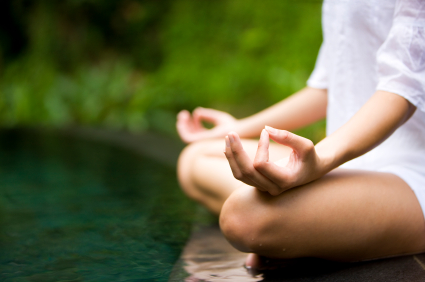THE BUSIER YOU ARE, THE MORE YOU NEED QUIET
 In an interview with Vox’s Ezra Klein, journalist and author Ta-Nehisi Coates argued that serious thinkers and writers should get off Twitter. It wasn’t a critique of the 140-character medium or even the quality of the social media discourse in the age of fake news.
In an interview with Vox’s Ezra Klein, journalist and author Ta-Nehisi Coates argued that serious thinkers and writers should get off Twitter. It wasn’t a critique of the 140-character medium or even the quality of the social media discourse in the age of fake news.
It was a call to get beyond the noise.
Coates, a 2015 recipient of the prestigious MacArthur Foundation’ “Genius” grant, a National Book Award winner and contributor to The Atlantic, believes that generating good ideas and quality work products requires something all too rare in modern life: quiet.
He’s in good company. Author JK Rowling, biographer Walter Isaacson, and psychiatrist Carl Jung have all had disciplined practices for managing the information flow and cultivating periods of deep silence. Ray Dalio, Bill George, CA Governor Jerry Brown and Ohio Congressman Tim Ryan have also described structured periods of silence as important factors in their success.
Recent studies are showing that taking time for silence restores the nervous system, helps sustain energy, and conditions our minds to be more adaptive and responsive to the complex environments in which so many of us now live, work, and lead. Duke Medical School’s Imke Kirste recently found that silence is associated with the development of new cells in the hippocampus, the key brain region associated with learning and memory.
 Physician Luciano Bernardi found that two-minutes of silence inserted between musical pieces proved more stabilizing to cardiovascular and respiratory systems than even the music categorized as “relaxing.” And a 2013 study in the Journal of Environmental Psychology, based on a survey of 43,000 workers, concluded that the disadvantages of noise and distraction associated with open office plans outweighed anticipated, but still unproven, benefits like increasing morale and productivity boosts from unplanned interactions.
Physician Luciano Bernardi found that two-minutes of silence inserted between musical pieces proved more stabilizing to cardiovascular and respiratory systems than even the music categorized as “relaxing.” And a 2013 study in the Journal of Environmental Psychology, based on a survey of 43,000 workers, concluded that the disadvantages of noise and distraction associated with open office plans outweighed anticipated, but still unproven, benefits like increasing morale and productivity boosts from unplanned interactions.
But cultivating silence isn’t just about getting respite from the distractions of office chatter or tweets. Real sustained silence, the kind that facilitates clear and creative thinking, quiets inner chatter as well as outer.
It’s about taking a temporary break from one of life’s most basic responsibilities: Having to think of what to say.
 Cultivating silence increases your chances of encountering novel ideas and information. When we’re constantly fixated on the verbal agenda—what to say next, what to write next, what to tweet next—it’s tough to make room for truly different perspectives or radically new ideas. It’s hard to drop into deeper modes of listening and attention. And it’s in those deeper modes of attention that truly novel ideas are found.
Cultivating silence increases your chances of encountering novel ideas and information. When we’re constantly fixated on the verbal agenda—what to say next, what to write next, what to tweet next—it’s tough to make room for truly different perspectives or radically new ideas. It’s hard to drop into deeper modes of listening and attention. And it’s in those deeper modes of attention that truly novel ideas are found.
Even incredibly busy people can cultivate periods of sustained quiet time. Here are 3 practical suggestions:
1) Punctuate meetings with five minutes of quiet time. If you’re able to close the office door, retreat to a park bench, or find another quiet hideaway, it’s possible to hit reset by engaging in a silent practice of meditation or reflection.
2) Take a silent afternoon in nature. You need not be a rugged outdoors type to ditch the phone and go for a simple two-or-three-hour jaunt in nature. Immersion in nature can be the clearest option for improving creative thinking capacities. Henry David Thoreau went to the woods for a reason.
3) Go on a media fast. Turn off your email for several hours or even a full day, or try “fasting” from news and entertainment. While there may still be plenty of noise around—family, conversation, city sounds—you can enjoy real benefits by resting the parts of your mind associated with unending work obligations and tracking social media or current events.
The world is getting louder. But silence is still accessible—it just takes commitment and creativity to cultivate it.


 Leading an Authentic Life doesn’t mean spouting your ‘truth’ every time there appears an opening. It’s not the wisest move to be habitually giving your opinions at work or anywhere else for that matter. Yes, honesty matters. And what we are thinking may or may not be the arbiter of truth-ours or anyone else’s. Living with authenticity is different than this. It means to live a life that is genuine and principled.
Leading an Authentic Life doesn’t mean spouting your ‘truth’ every time there appears an opening. It’s not the wisest move to be habitually giving your opinions at work or anywhere else for that matter. Yes, honesty matters. And what we are thinking may or may not be the arbiter of truth-ours or anyone else’s. Living with authenticity is different than this. It means to live a life that is genuine and principled. A large part of living an authentic life involves being aware of your ability to chart your own course, choosing wisely the activities of your day to mirror your intentions and goals. While many things happen each day that we cannot control- we can choose our actions.
A large part of living an authentic life involves being aware of your ability to chart your own course, choosing wisely the activities of your day to mirror your intentions and goals. While many things happen each day that we cannot control- we can choose our actions. Don’t be too deliberate. Without this seeming like a completely contradictory message, consider how you can be intentional in your behaviors without over analyzing and over thinking everything. Too much opinion polling and second guessing in our lives is sometimes called “analysis paralysis.” Deep down, there is an intuitive understanding of who you are as a person. Trust yourself.
Don’t be too deliberate. Without this seeming like a completely contradictory message, consider how you can be intentional in your behaviors without over analyzing and over thinking everything. Too much opinion polling and second guessing in our lives is sometimes called “analysis paralysis.” Deep down, there is an intuitive understanding of who you are as a person. Trust yourself. When you are truly connected to the present moment, there is less attachment to needing certain outcomes or trying to control the way things are. It puts things in perspective and increases connection with the whole of life.
When you are truly connected to the present moment, there is less attachment to needing certain outcomes or trying to control the way things are. It puts things in perspective and increases connection with the whole of life.
 The first step is to acknowledge how uncomfortable we feel. Usually, we attempt to bury this fact of uncomfortableness in all kinds of escape hatches. Rabbit holes of stress eating, excessive talking, social media, drinking- you can fill this in with a million other not so sly schemes.
The first step is to acknowledge how uncomfortable we feel. Usually, we attempt to bury this fact of uncomfortableness in all kinds of escape hatches. Rabbit holes of stress eating, excessive talking, social media, drinking- you can fill this in with a million other not so sly schemes. Go easy; try not to judge yourself. When experiencing strong emotions, become aware of the current stream of thoughts without judging whether you should be having these thoughts or not. Be curious about them, but not necessarily true in any real way.
Go easy; try not to judge yourself. When experiencing strong emotions, become aware of the current stream of thoughts without judging whether you should be having these thoughts or not. Be curious about them, but not necessarily true in any real way.




 Hat wearing isn’t what it used to be. Prior to the 1950s, nobody would think about going outside without a hat, no matter the season. In fact, your hat, whether you were a nurse, a white collar executive or a gas station attendant told the world a lot about your socioeconomic status and what your occupation was.
Hat wearing isn’t what it used to be. Prior to the 1950s, nobody would think about going outside without a hat, no matter the season. In fact, your hat, whether you were a nurse, a white collar executive or a gas station attendant told the world a lot about your socioeconomic status and what your occupation was.

 Have you got started on your New Year’s resolutions yet?
Have you got started on your New Year’s resolutions yet? Have you ever noticed that a lot of the time you are just not noticing? For instance, you are driving to the grocery store or to work (both of which you have done a million times), and not remembering when you arrive how you got there. Just traveling on auto pilot, or absorbed in a phone conversation, you have missed the ride. Perhaps you think, “I’ve done this trip so often I could do it in my sleep!” And guess what? In a very real way, you are! Conscious but not truly awake.
Have you ever noticed that a lot of the time you are just not noticing? For instance, you are driving to the grocery store or to work (both of which you have done a million times), and not remembering when you arrive how you got there. Just traveling on auto pilot, or absorbed in a phone conversation, you have missed the ride. Perhaps you think, “I’ve done this trip so often I could do it in my sleep!” And guess what? In a very real way, you are! Conscious but not truly awake.